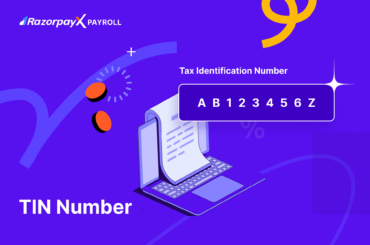Table of Contents
Introduction
Did you know that the Labour Welfare Fund is one of India’s few statutory frameworks dedicated to improving the well-being of employees?
Many companies and employees remain unaware of this fund’s operations and advantages, in spite of its importance.
In a period where workplace laws and employee rights are gaining momentum, understanding the meaning of LWF and its impact on workers’ compensation is critical for compliance and employee satisfaction.
In this article, we break down everything you need to know about the Labour Welfare Fund, from its purpose, applicability, calculation methods, and contributions to welfare.
Whether you’re managing individual teams or are the HR, this guide will help clarify the complex workings of the Labour Welfare Fund Act and how it fits into the broader labour acts laws of India.
What Is the Labour Welfare Fund and Why Is It Important?
The Labour Welfare Fund is a legal contribution established to improve the quality of life for workers in both organized and unorganized sectors. It was introduced under the Industrial Disputes Act of 1947 and was implemented through the Labour Welfare Fund Act of 1965.
The labour welfare fund extends to multiple services, including family care, women’s education, and health initiatives, thus making it a foundation for workforce development under India’s labour acts.
By nurturing worker welfare, the Labour Welfare Fund plays a critical role in human resource management, aligning employee rights with organizational compliance.
Scope of Labour Welfare Fund in HRM
The Labour Welfare Fund serves as an essential means in employment law for addressing employee needs and improving their productivity. The scope of LWF includes:
- Welfare Fund Benefits: The fund supports housing, education, medical aid, and retirement pensions, hence ensuring improved working conditions.
- Employee Contributions: Both employers and employees contribute to the fund, often reflected as LWF deduction or EE LWF contribution on payslip.
- Compliance in HR: Managing LWF in salary aligns with worker laws and helps organizations stay compliant with labour laws in India.
- Tax Deductions: Contributions qualify under Section 43B of the Income Tax Act, making it financially practical for employers.
How Is LWF Calculated?
A number of factors are taken into consideration while calculating the Labour Welfare Fund, chief among them being regional rules, employer and employee contributions, and salary thresholds. LWF’s primary goal is to support employee welfare, while contributions are mostly governed by state-specific regulations.
Steps to Calculate LWF Contributions:
- Identify Applicability: First, it’s important to verify if the company meets state requirements for LWF contributions. This includes minimum employee counts or salary limits.
- Determine Employee Eligibility: Then, identify eligible employees based on their salaries and roles. Remember, employees in managerial roles are often excluded from LWF applicability.
- Apply State-Specific Rates: Now calculate the contributions using the rates specified for the state where the organization operates. The LWF deduction formula varies across states. It is mentioned in detail in the table below.
- Frequency of Deduction: These contributions may be deducted monthly, bi-annually, or annually, depending on state regulations.
- Record in Payroll: It’s crucial to record these contributions correctly in the employee’s salary slip. Many employers label it as LWF in the salary slip.
Automate these complex calculations with RazorpayX Payroll Software.
State-Wise LWF Rules
Below is an overview of state-specific regulations for the Labour Welfare Fund:
| State | Minimum Employees | Employee Contribution | Employer Contribution | Frequency | Due Date |
| Maharashtra | 5 or more | ₹6 – ₹12 | ₹18 – ₹36 | Bi-annual | 15th Jan/July |
| Kerala | 2 or more | ₹4 | ₹8 | Monthly | 5th of Next Month |
| Tamil Nadu | 5 or more | ₹10 | ₹20 | Annual | 31st January |
| Gujarat | 10 or more | ₹6 | ₹12 | Bi-annual | 15th Jan/July |
| Karnataka | 50 or more | ₹20 | ₹40 | Annual | 15th January |
| West Bengal | 10 or more | ₹3 | ₹15 | Bi-annual | 15th Jan/July |
| Delhi | 5 or more | ₹0.75 | ₹2.25 | Bi-annual | 15th Jan/July |
| Haryana | All | 0.2% of salary | Twice Employee Contribution | Monthly | 15th of Next Month |
| Andhra Pradesh | 20 or more | ₹30 | ₹70 | Annual | 15th January |
Challenges in Manual Calculation
The complexity of LWF calculation arises from the different state-specific regulations we have. Managing all these contributions for employees across multiple states requires constant tracking of different rates, eligibility criteria, and payment deadlines.
RazorpayX Payroll automates LWF calculations by adapting to region-specific rules. It minimizes compliance risks, ensures accuracy, and reduces HR workload.
With Razorpay you can simplify your LWF deduction process and avoid future penalties!
What Is EE LWF’s Contribution?
EE LWF contribution refers to the portion of the Labour Welfare Fund that is deducted from an employee’s salary. It signifies the employee + employer contribution for funding these labour welfare activities.
The contribution rate for each varies by state and is typically calculated as a percentage of the employee’s income. Employers often contribute double or triple the amount deducted from employees. For example, if the employee LWF contribution is ₹3, the employer contributes ₹6, making the total ₹9.
Penalties and Compliance Under the Labour Welfare Fund
The Labour Welfare Fund mandates employers to comply with certain rules to keep the process transparent, as non-compliance can often lead to penalties and legal actions.
LWF Records Maintenance
Employers must maintain detailed records of the following to avoid penalties:
- Employee details like name, wages, and LWF employee contributions.
- Receipts for LWF deductions and payments.
- Annual returns submitted to the Labour Welfare Fund committee.
- Board resolutions approving LWF payments.
- Other documents were requested during inspections.
These records must be retained for at least five years to ensure compliance with labour acts in India.
Penalties for LWF Non-Compliance
Employers failing to comply with LWF rules mentioned above need to:
- Pay monetary fines of up to ₹5,000 for delayed or non-payment of LWF deductions.
- Adjust with interest rates are as high as 25% per annum on overdue amounts.
- Provide the recovery of dues as arrears of land revenue.
- Deal with prosecution leading to business interruptions or closures.
Thus, strict adherence to LWF regulations protects employers from these penalties and strengthens trust between the employee and employer.
Streamlining Compliance with RayzorPayX Payroll Software
Modern payroll management software simplifies compliance. It automates LWF calculations, ensures accurate deductions, and generates real-time reports.
Employers can manage deductions for acts like ESI, TDS, and LWF through an efficient system, avoiding penalties while improving productivity.
Software like RazorpayX Payroll enhances accuracy, keeps track of contributions, and integrates compliance with various wage payment laws, ensuring a smooth workflow.
This provides benefits for both the organization and employees, aligning with labour welfare fund objectives.
Conclusion
The Labour Welfare Fund plays a vital role in enhancing employee well-being by funding initiatives like housing, education, and medical benefits. It ensures fair contributions from both the employer and employee while promoting compliance with labour laws in India.
Understanding and adhering to the LWF ensures a better workplace and supports employee rights. Proper maintenance of records, and timely payments, can be automated through payroll software to simplify compliance and reduce errors.
Start optimizing your payroll processes today to stay compliant and foster a more productive work environment.
Explore tools like RazorpayX Payroll for Labour Welfare Fund deductions and compliance effortlessly!
FAQs
Who contributes to the Labour Welfare Fund?
Both the employer and the employee contribute to the Labour Welfare Fund (LWF). The employer usually deducts the employee's share from their salary and submits it to the fund on their behalf.
What is the frequency of contribution to the Labour Welfare Funds?
The LWF can be deducted monthly, half-yearly, or annually, depending on the state-specific rules. The employer deducts the amount from the employee’s salary and submits it before the due date specified in the respective state act.
Who is eligible for the labour welfare fund?
Employees who perform manual, clerical, technical, or supervisory work, whether full-time or on contract, are eligible for the Labour Welfare Fund. However, managerial staff are not covered under the Act.
Is LWF exempted from tax for employers?
Yes, employers can claim deductions under Section 43B for contributions made to employee welfare funds, including the Labour Welfare Fund, in the year the contribution is paid.





